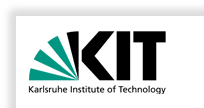The quality properties that software systems aim to satisfy are key to the success of the systems. For many quality properties, methods and techniques have been developed for assessing these properties, such as: performance, reliability, availability and some more. Several important architectural properties elude such quantitative assessment techniques- notably: maintainability (modifyiability, portability, extensability), interoperability. Having approaches for better assessing these properties would help in various aspects of managing software development, one particular application being managing technical debt.
A lot of work exists in the area of metrics for maintainability, for example. However, metrics suffer from several drawbacks: (1) it may be unclear whether that metric is valid, i.e. whether it really measures the quality property of interest, (2) it remains difficult to interpret metrics (‘What does a maintainability of 4.5 mean?’) and (3) it may be too expensive to collect the data for computing the metric (e.g. building a fully fledged reliability model might not be cost-efficient for many systems). Thus, quantification is not always a good choice. Qualitative approaches could be a complementary approach for (automatically) making sense of this quantitative data.
Since 1 January 2021, the chair of Architecture-driven Requirements Engineering is part of the KASTEL institute as the Modelling for Continuous Software Engineering group. Please visit our new homepage at https://mcse.kastel.kit.edu.

